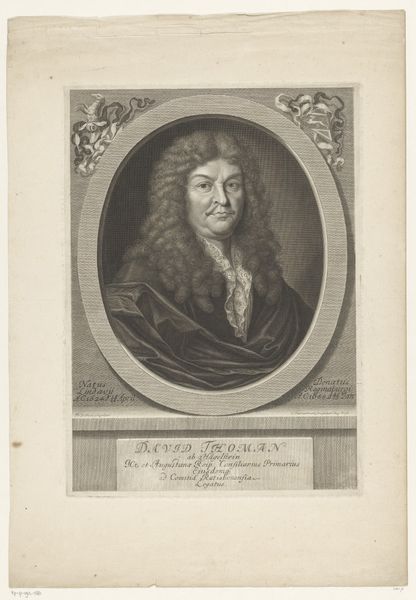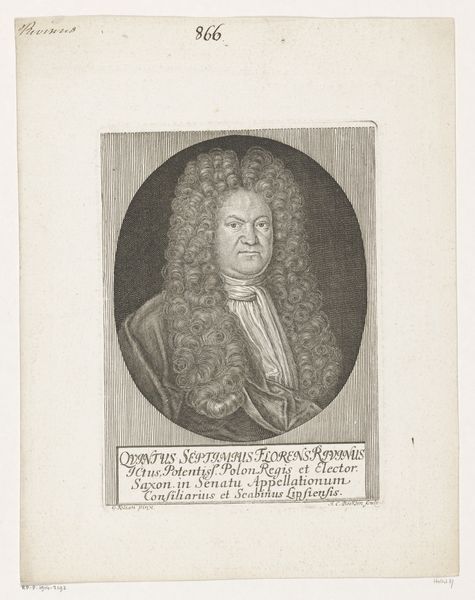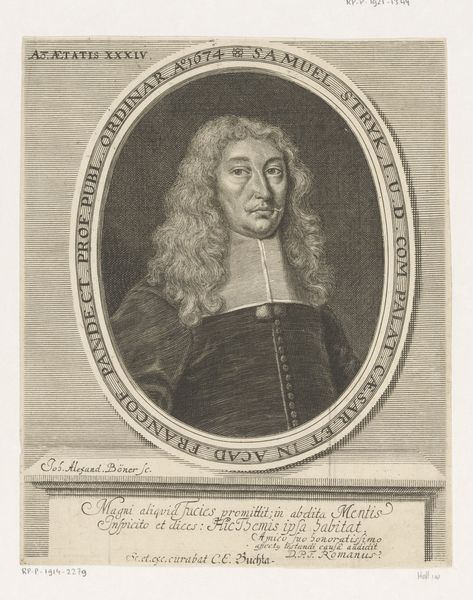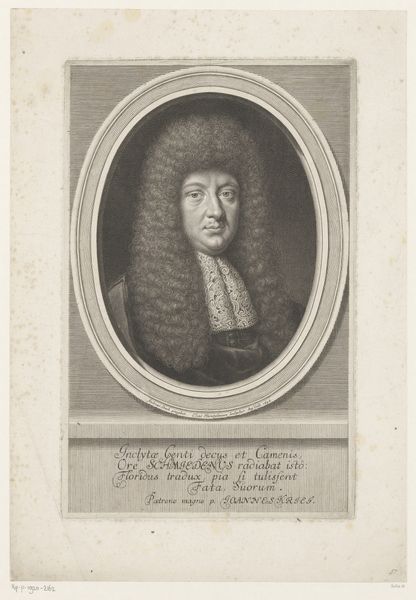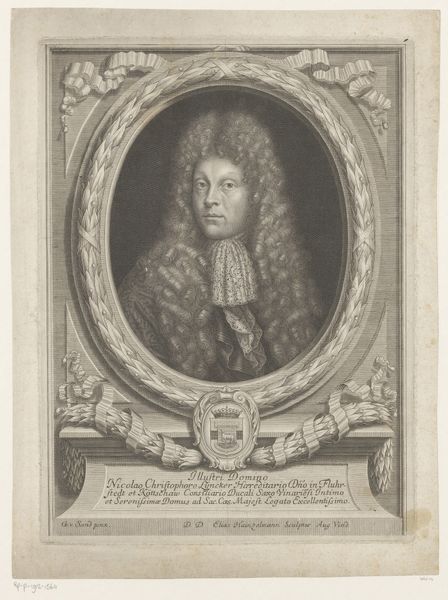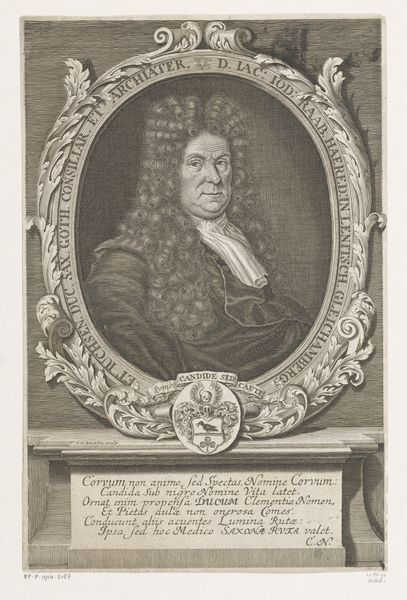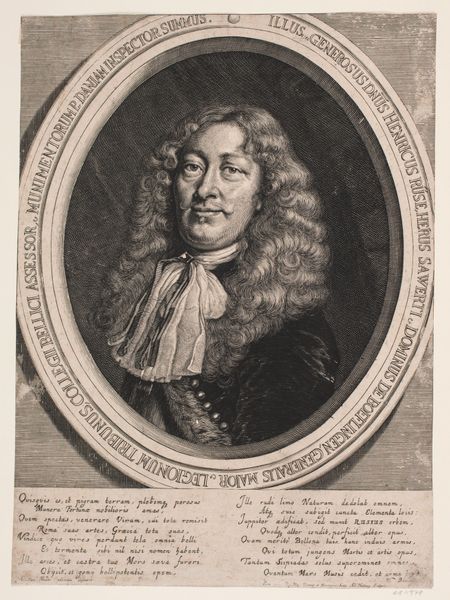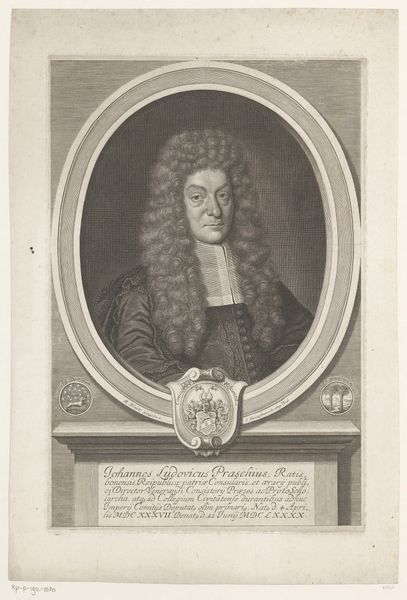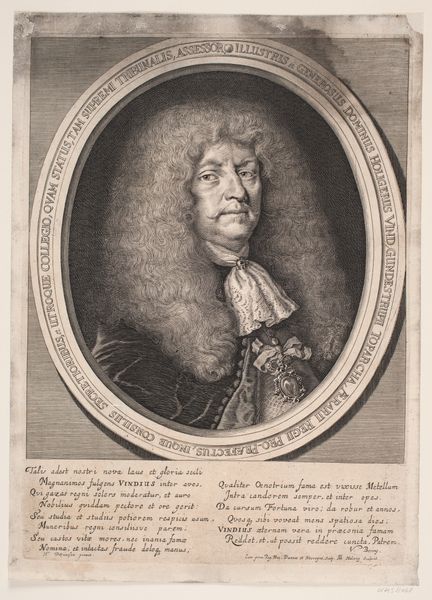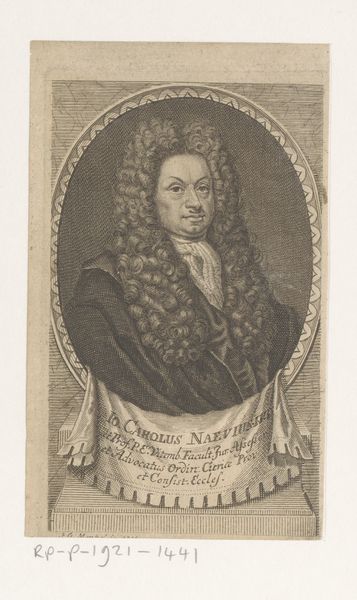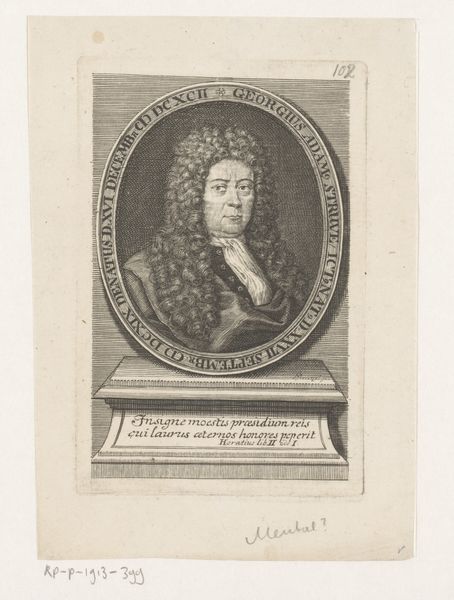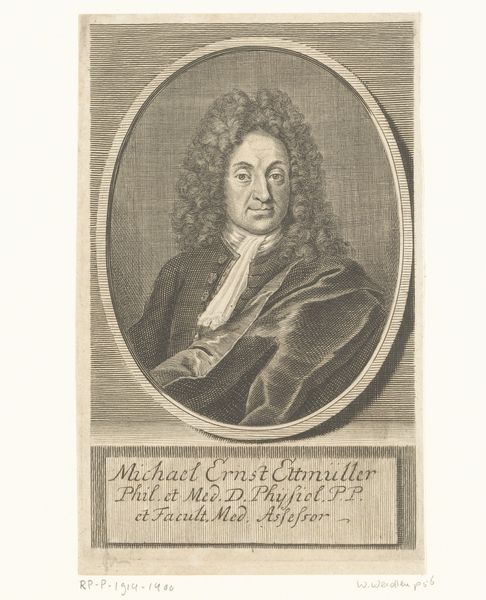
metal, engraving
#
portrait
#
baroque
#
metal
#
history-painting
#
engraving
Dimensions: height 280 mm, width 175 mm
Copyright: Rijks Museum: Open Domain
Curator: My first thought is just: powder. So much powder! Editor: Indeed! We're looking at an engraving from 1693. The work is entitled "Portret van Tido Henrich von der Lith," and it was created by Heinrich Jakob Otto. You can really see the Baroque influence here, can't you? All that flourish. Curator: Oh, undeniably. And the formality! I imagine Herr von der Lith was quite pleased. Though, between you and me, it makes him seem a bit... stuffy? Like he’s permanently smelling something unpleasant. Editor: He was Professor of Eloquence and Consul of Frankfurt! Of course he had to uphold an image. The way Otto has rendered his wig alone is a study in labor—etching those countless curls into the metal plate, all those lines to create the effect of light on… flour! Curator: *Flour*, indeed! Although the curls do have a certain mesmerizing quality, don’t you think? Almost like gazing into a whirlpool of societal expectation. It speaks of an age utterly consumed with appearances. Editor: More than just appearances, though! Think about the cost of that wig, the social structure needed to support the professor and the engraver… consider the global trade networks necessary for even the materials! And for an engraving made from metal? That is intense work—etching acids, painstaking detail. We might consider this piece a snapshot of complex networks of power and production in the 17th century. Curator: It certainly gives one a different perspective on that rather severe face, doesn't it? I can almost sense the weight of history in his gaze now. He’s not merely a man with an elaborate wig; he's an artifact himself, representing layers upon layers of bygone social conventions. Editor: And labor, we should add. To properly assess such piece means accounting for both visibility and its process, a reminder that "art" is anything but magically made. Curator: Well, I suppose our friend Tido is more intriguing than I first gave him credit for! Editor: Quite. It invites us to consider artmaking itself a form of history making.
Comments
No comments
Be the first to comment and join the conversation on the ultimate creative platform.
